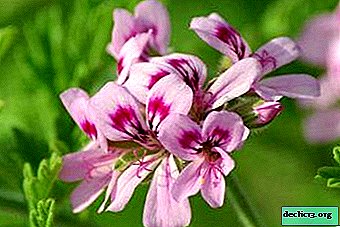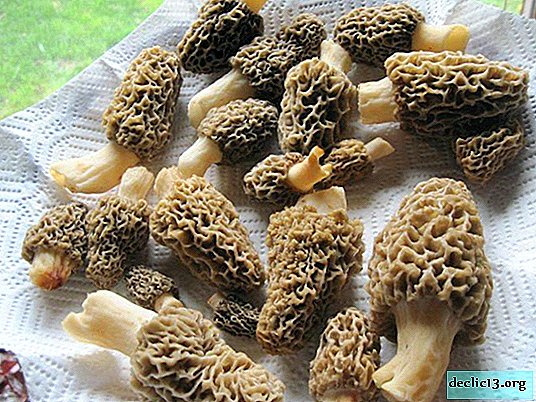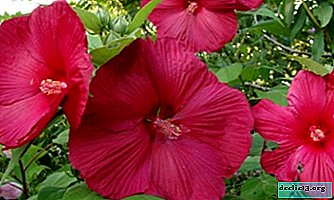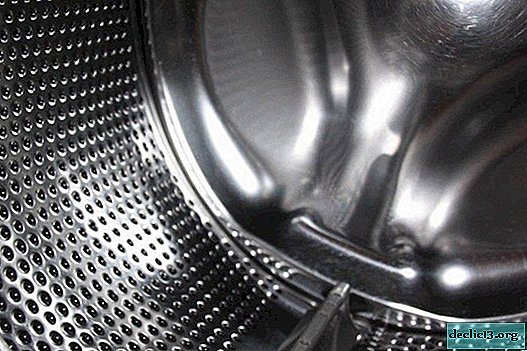What to do if white, black and other bugs appeared on an orchid? Tips for novice florists
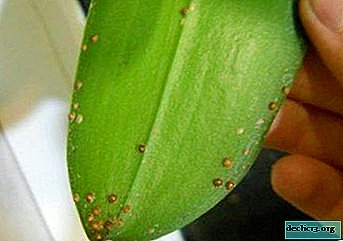
One of the most beautiful and delicate flowers is an orchid. She pleases the eye with her flowering. However, often on this beauty various pests appear. Some of them are bugs. You see that the orchid fell ill, white bugs got on it and don’t know what to do? This article will answer all your questions.
Bugs are small pests that appear on the stems, leaves of the orchid, as well as in the substrate where it grows. There are many types of these pests. What to do if white or black shaggy bugs appear and how to get rid of them at home, as well as images of such pests in the photo. About all this - further, but for a start we will consider these pests in more detail.
Types of insect pests with photos
Aphid

Aphids are small black or green bugs. You can see them with the naked eye. Usually, aphids appear on young green leaves on the reverse side, and can often parasitize on the sprouts and stems of orchids. This insect is dangerous in that it secretes a specific substance that leaves a sticky coating on the surface of the flower.
If the aphid leaves its traces on the leaves of the orchid, then they quickly deform and die. This pest sucks the juices from the flower and destroys its structure. Also, aphids are a carrier of various fungal diseases.
All the details about what it is and how to get rid of aphids on your beauty, you will find here.
Spider mite

This type of pest is dangerous because in the early stages of its appearance it is almost impossible to notice. First, a thin film appears on the flower - a spider web. She envelops the leaves, stem and processes of orchids. You can notice the spider web when processing a flower (often when spraying).
IMPORTANT: If a web is found on an orchid, it is necessary to urgently process the flower, otherwise it will die.If the spider mite appeared on your pet for a long time, then black spots appear on the leaves, or the leaves turn yellow, deform and dry out. This type of parasite loves young and green leaves of orchids. Like aphids, the spider mite is a carrier of various fungi. If the orchid begins to blacken, then at this stage it is very difficult to save it.
You can familiarize yourself with all the effective ways to get rid of the spider mite on the orchid in this article, and here we will talk about other different types of ticks and methods of dealing with them.
Thrips

Thrips are small insects, mostly dark in color.. The insidiousness of this type of pest lies in the fact that at the initial stages of the defeat of the flower, they are almost impossible to detect. Thrips often hide in the ground where the orchid grows.
The presence of thrips is indicated by small black dots on the leaves, as well as a thin film on the stems or processes of the orchid. Thrips feed on the juice of a flower, and also damage the roots of an orchid and its stem.
What are thrips and how to get rid of them you will learn in this article.
Nails

This type of insect often appears after watering the flower. These are small thin gray, gray-brown or gray-white pests, which are mainly found in the substrate where the orchid grows, but can also appear on the leaves. Prefer data insects soil, which contains moss. They love moisture, and therefore appear after watering.
Unlike previous pests of the nailstail (the scientific name for podura) are not located somewhere in a particular place, but move throughout the plant. In their appearance and behavior, the nails resemble animal fleas. Basically, these white parasites infect orchid roots, preferring to plant in younger plants.
Nematodes

These are small worms of predominantly light color. However, transparent nematodes affect the orchid, which greatly complicates the fight against them, because in the initial stages they are very difficult to detect. These pests often infect the roots, stems, and leaves of your pet.
How to determine that it was the nematodes that struck the orchid? It is very simple. The first sign is the lag of the orchid in growth, the leaves of the flower grow immediately irregularly shaped, and light spots and grooves appear on them, which then darken. At the roots of the orchid, there are swellings and dead spots.
Butterflies

We are used to the fact that butterflies are harmless and beautiful insects that delight the eye. However, these insects can also harm plants. Let's talk about two types of butterflies that most often affect the orchid - it's leaflets and fireworks.
Leafworm is a moth predominantly yellow with dark splashes of color or a light brown hue. Basically leafworms eat the upper part of the flower or its leaves, less often the roots and the stem of the orchid are damaged. Firefly prefers to overeat the tops of young stems of orchids and leaves.
You can detect the appearance of a muzzle by the presence of a white film on the groundwhere the orchid grows. If you lift this film, you can see small caterpillars, sometimes they crawl to the base of the leaf plate of the plant. Unlike previous pests, moths strike their orchids in the warm season, mainly in late spring and summer.
Shields

Scabies are an insect that secretes a specific substance (wax), thereby forming a protective shield over it. It is very easy to determine the presence of this pest on an orchid. Small growths and tubercles form on the flower. It is under them that the scale insects hide.
These insects feed on the juice of young orchids, which significantly slows down the growth of the flower. Particular preference for scabies is given to orchids with dense leaves. Scaleflies also love flower stems. In more detail about the fight against scale insects on orchids, we wrote here.
All types of orchid pests are described in this material.
The danger of insects to plants
It is easy to guess that the danger of all bugs for an orchid is primarily a slowdown in flower growth, deformation and drying of leaves, damage and drying of roots. If you do not take measures when detecting a particular pest, then often the death of a beautiful orchid.
Causes
Consider the causes of pest bugs by type:
- Aphid. Aphids often appear in a dry substrate. It can also appear with reduced air humidity in the room where the orchid grows. Aphids are also attracted to plants that lack mineral fertilizing, in particular a lack of iron can serve as a prerequisite for the appearance of this pest. But an excess of nitrogen can also lead to aphid infection.
- Spider mite, like aphids appear in those cases when the plant does not have enough moisture (dry, hot room, not enough frequent watering).
- Thrips. Unlike the previous two pest bugs, thrips, on the contrary, love excess moisture. The reason for their appearance may be frequent spraying of orchids, excessive watering (the case when a layer of water forms on the substrate). Also, thrips can move from another infected plant to an orchid.
- Gossips (Podura) just like thrips are formed in excess moisture. In other cases, the risk of contracting orchids with podura is zero.
- Nematodes most often appear when plants are not transplanted correctly after purchase. Especially if you use the land from the garden, and not a special substrate. It should also be borne in mind that if an orchid grows in a special soil, and next to it is a plant in a pot with ordinary garden soil, then the risk of infection is also present.
- Butterflies. In general, this type of pest is very rare, but it still has a place to be. Moths hit the flower if you decide to take the pot of orchids outside and put it there for a long time. In other cases, the risk of infection is low.
- Shields love the heat. Therefore, improper temperature conditions can provoke their appearance. If the temperature in the room where the orchid grows is above 25 degrees, then be prepared for the defeat of the flower.
Methods of struggle
Consider methods of dealing with the main pests of orchids. First of all, do not panic, because the flower can be saved in any case. There are many folk remedies for the prevention and control of bugs. If they do not help, then you should resort to chemicals.
ATTENTION: Do not get involved in various chemicals, because it can damage the orchid. More specific control methods will be listed below.Folk remedies for flower treatment
From the guards
If your darling was attacked by scale insects, then the proven remedy for fighting is garlic.. To do this, you must:
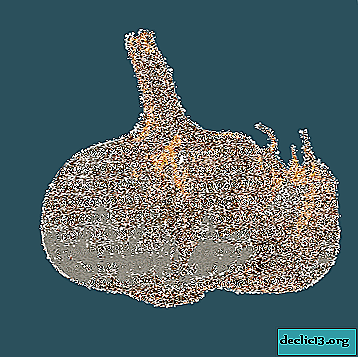 take garlic;
take garlic;- squeeze it through a garlic squeezer;
- with the resulting mixture, wipe the tubercles, under which the scale shield is hidden.
This method is good at the beginning of the fight, when there are few pests. This procedure is carried out 3-4 times a day for a week.
Watch the video about the treatment of orchids from the scab with garlic solution:
From aphids
To combat aphids, you need to use an infusion of onion husks. For this:
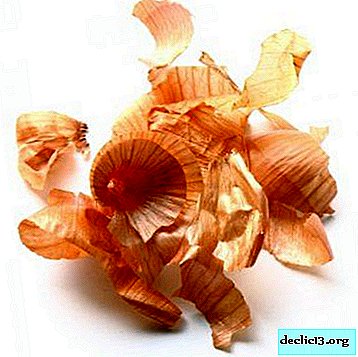 200 g of husk is infused in 1.5 liters of boiling water for 8 hours. It is best prepared in the evening and in the morning you can already use it.
200 g of husk is infused in 1.5 liters of boiling water for 8 hours. It is best prepared in the evening and in the morning you can already use it.- Strain the infusion through gauze and spray the orchid 2 times a day (with severe damage) 3 times for 4 days.
An infusion of citrus peels also helps:
- 200 grams of peels (mandarin, orange or lemon) is infused in 1.5 liters of water for 8 hours.
- To receive the received infusion to spray a plant every 5 hours (at strong infection every 4 hours) 5 - days.
To achieve the best effect of measles from the infusion put on the ground.
From the spider mite
 To combat the spider mite, you need household soap:
To combat the spider mite, you need household soap:
- dilute laundry soap (1 tbsp.spoon of soap grated on a coarse grater) in 1 liter of warm water;
- with the resulting solution, wipe the affected areas of the orchid.
Watch a video about processing orchids from spider mites:
From thrips
 To destroy thrips, you can use this mixture:
To destroy thrips, you can use this mixture:
- 1 tbsp. ground onion and 1 tbsp. spoon chopped garlic mix with 1 liter. water;
- this solution is infused for 4 hours;
- then spray the orchid for a week 2 times a day.
Chemicals
If folk remedies do not help in the fight, then chemical. However, you should clearly follow the instructions, otherwise you can cause irreparable harm to the orchid. The most common means:
- Fitoverm.
- Neoron
- Actofit.
- Vermitek.
Infection prevention
First of all, it is necessary to observe the temperature regime of the flower content. The optimum temperature is no more than 23 degrees. Also monitor air humidity. Do not forget that excessive humidity also causes pests.
It is necessary to periodically inspect the plant for the presence of yellow leaves, deformation of the stem and growths. It is also necessary sometimes to spray the orchid and maintain the necessary moisture in the substrateHowever, do not overdo it with watering the plant.
Conclusion
Orchid is certainly a beautiful and delicate flower. With proper care and maintenance, it will delight you with its beauty and freshness for a long time.

 take garlic;
take garlic; 200 g of husk is infused in 1.5 liters of boiling water for 8 hours. It is best prepared in the evening and in the morning you can already use it.
200 g of husk is infused in 1.5 liters of boiling water for 8 hours. It is best prepared in the evening and in the morning you can already use it.
